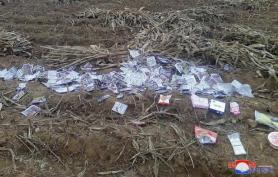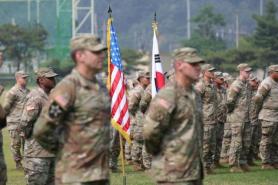
SEOUL, November 03 (AJP) - Seoul and Washington are expected to discuss detailed plans for the transition of wartime operational control (OPCON) and South Korea’s nuclear-powered submarine initiative — two agenda items that could reshape the country’s self-defense posture — during this week’s high-level bilateral security talks.
The 57th annual Security Consultative Meeting (SCM), set for Tuesday in Seoul, is expected to focus on adjustments to the combined defense strategy and the future direction of alliance cooperation.
U.S. Defense Secretary Pete Hegseth arrived in Seoul on Monday and is scheduled to tour the Joint Security Area (JSA) with South Korean Defense Minister Ahn Kyu-baek later in the day.
It marks the first time in eight years that the defense chiefs of both nations have jointly visited the inter-Korean border, following the 2017 trip by Song Young-moo and James Mattis.
In line with President Donald Trump’s recent declaration of a “stronger-than-ever” alliance during his visit to Korea, the two ministers will meet South Korean and U.S. service members stationed in the JSA and reaffirm the importance of their combined defense posture.
On Tuesday, Hegseth and Ahn will hold formal talks in Seoul as part of the SCM — the first since both governments launched new administrations. The meeting is widely seen as a key juncture to recalibrate alliance roles and adapt them to evolving regional security challenges.
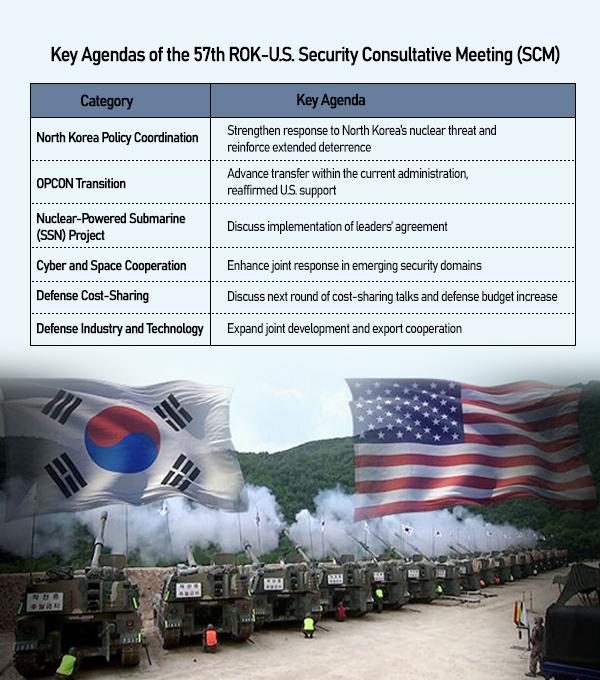
Two of the most closely watched topics will be the OPCON transfer and Seoul’s nuclear-powered submarine plan.
During his flight to Kuala Lumpur last week for the ASEAN Defense Ministers’ Meeting Plus, Hegseth called Korea’s OPCON transition efforts “a commendable step forward.”
Ahn has said Seoul “welcomes U.S. support for the transition” and aims to complete it within the current administration’s term.
The nuclear-powered submarine issue is also expected to receive detailed treatment. The discussion follows an agreement reached by Presidents Lee Jae-myung and Donald Trump during last week’s APEC Summit in Gyeongju. Both governments are preparing a three-page “joint fact sheet” summarizing the agreement, reportedly stating that “the United States and South Korea will work together toward the construction of South Korea’s nuclear-powered submarines.”
Separately, Seoul has been moving rapidly to build up autonomous defense functions.
On Sunday, the Defense Ministry announced that South Korea’s fifth military reconnaissance satellite had been successfully launched from Cape Canaveral Space Force Station in Florida aboard a SpaceX Falcon 9 rocket. The satellite reached its designated orbit 14 minutes after liftoff and established contact with a ground station an hour later.
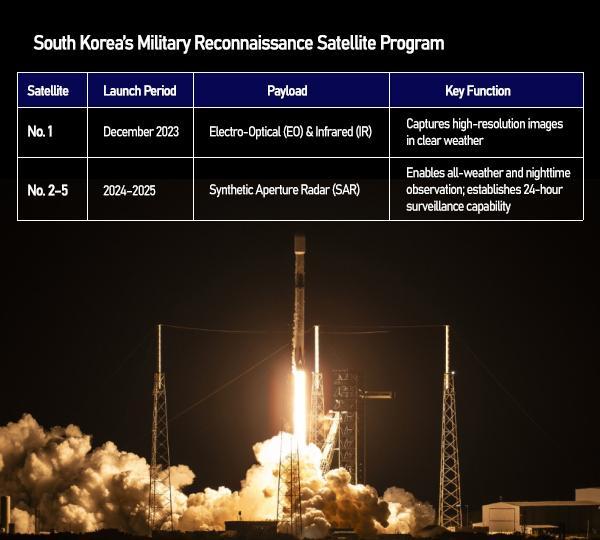
With this launch, South Korea now has a complete fleet of five reconnaissance satellites, enabling around-the-clock monitoring of North Korea with an observation interval of roughly two hours.
The ministry said the satellite network allows “independent, all-weather surveillance across the entire Korean Peninsula” and marks a “milestone in strengthening South Korea’s defense autonomy.”
The latest satellite is equipped with a Synthetic Aperture Radar (SAR) sensor capable of detecting objects as small as 30 centimeters — even at night or through clouds and rain. The capability enables near real-time tracking of North Korean missile launches and troop movements, enhancing the precision of Seoul’s Kill Chain preemptive strike system.
The ministry called the launch “a significant step toward self-reliant defense,” noting that it reduces Korea’s dependence on U.S. intelligence assets.
The Defense Acquisition Program Administration (DAPA) plans to deploy about 40 small satellites over the next several years, with the first launch slated for late next year.
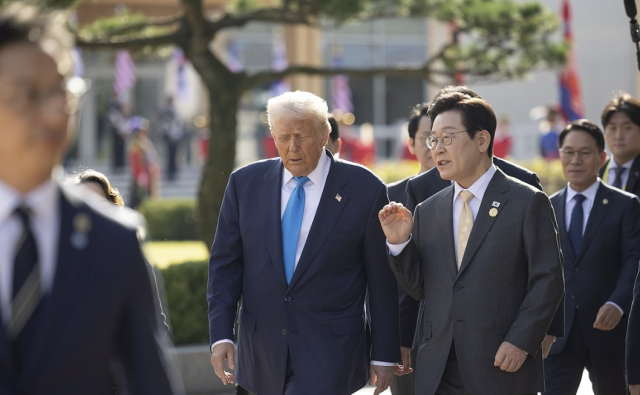
This week’s SCM comes at a pivotal moment as Seoul’s expanding defense capabilities converge with Washington’s efforts to update alliance structures. Following Tuesday’s meeting, the two governments are expected to release a joint statement outlining agreements on OPCON transfer, submarine cooperation, defense cost-sharing, and long-term alliance priorities.
Copyright ⓒ Aju Press All rights reserved.



